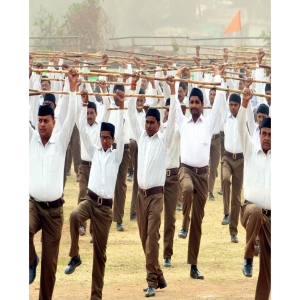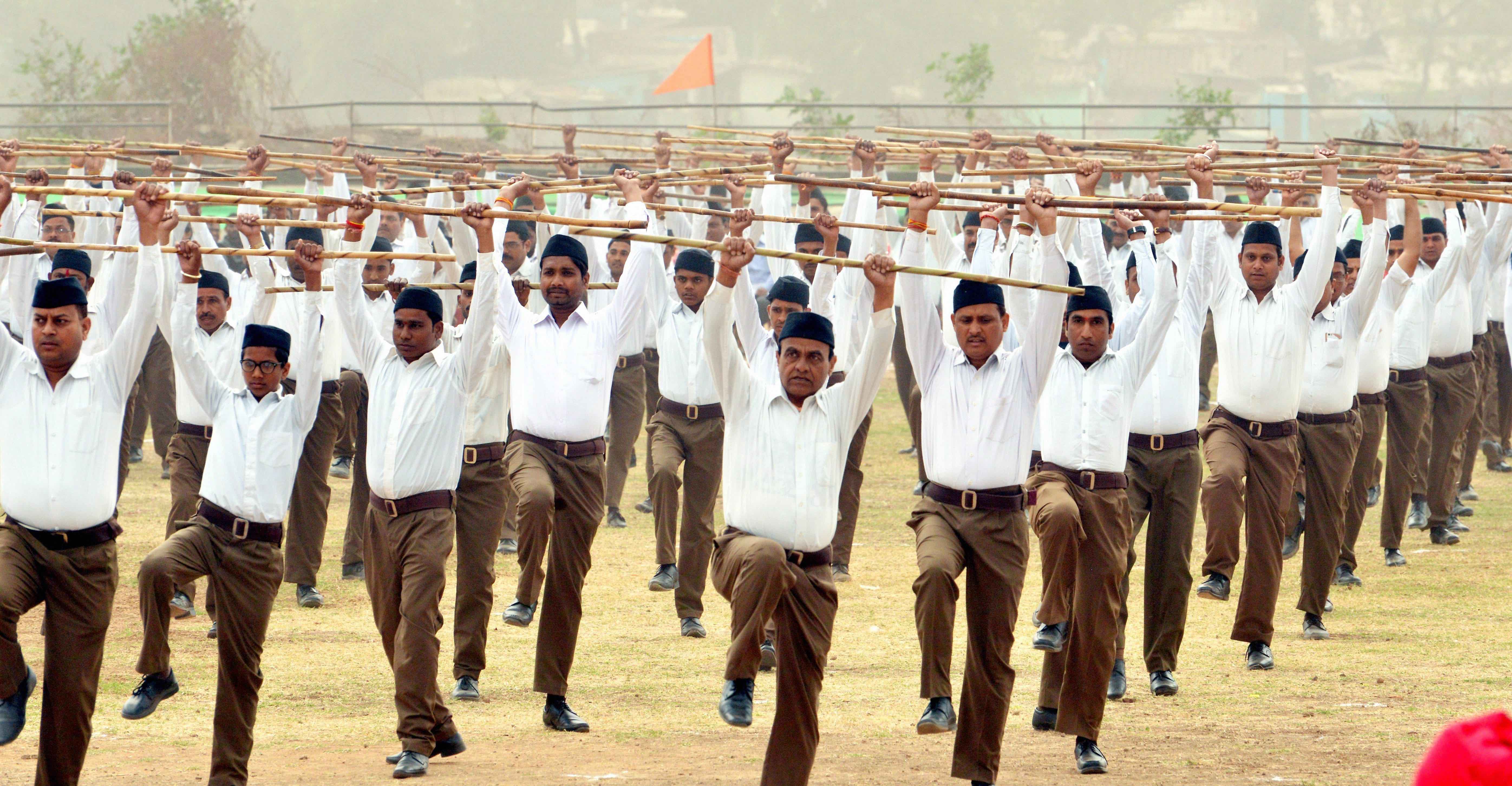
 A. J. Philip
A. J. Philip

Those who have lived in Saudi Arabia know about the religious police there. They function under a Committee for the Promotion of Virtue and the Prevention of Vice. They have unlimited power to detain, arrest, and punish those who violate Islamic practices. The punishment for those who are found eating during the fasting period will be more severe for Muslims than for non-Muslims.
When the religious police, called Mutaween, became a law unto themselves, the King had to intervene and curtail some of their powers. Today, they are not as fearsome as they were in the last decades of the 20th century. At least they had the sanction of the law, and they operated within certain parameters, which may not be acceptable to many of us who call ourselves liberals.
In India, there are no religious police, at least officially. Of late, we have seen how some lumpen elements who hide their identity by covering their faces with a saffron scarf or proclaim their identity by wearing such a folded shawl take the law into their own hands. Those who search YouTube can find such elements barging into churches and prayer halls and bashing up people by just claiming that they were indulging in conversion.
They are also the ones who challenge dairy owners who sell or buy bovines and lynch them to death. One does not, of course, have to mention those who surface before, during, and after Valentine's Day to harass couples who are found eating ice cream or holding hands in a park. More often than not, they do not have any privacy in their homes where three or four generations sleep together in a room.
Media euphemistically call them the moral police. They may also call them cow vigilantes if they specialise in lynching. Whatever the nomenclature, complaints against them are seldom entertained by the regular police, who alone are entrusted with the responsibility of protecting law and order.
All that they need to function as moral police is the saffron scarf and the boldness to say, "to hell with the Constitution". They know for sure that those who are in power would come to their rescue, as when they lined up in front of the jail with garlands when the rapists of Bilkis Bano were released.
When the students of Jawaharlal Nehru University were targeted, the vigilantes were seen aiding and abetting the police officers. During the anti-CAA protest at Jamia Milia, they played a frontal role in attacking the students. It may not be proper to call them Mutaween, but they can certainly be called extra-constitutional authorities.
Of course, things have been changing. It is for you to decide whether it is for the good of the nation or not. Who doesn't know that Modi is the sitting MP of Varanasi? It will go to the polls in the last phase of the polling in June to allow him to campaign to his heart's content. Small wonder that he is already called the Propaganda Minister, a tribute to his time-tested Goebbelsian abilities.
On December 13, 2021, we saw how Modi inaugurated the Kashi Vishwanath Corridor project that connects the ancient and sacred temple with some ghats in Varanasi. It was the first time he performed the role of a high priest. It was this experience that emboldened him to do the Pran Prathishta ceremony at the Ram temple at Ayodhya. For the first time, the prime minister of a secular nation, donned the robes of a priest to consecrate a temple.
It is a different matter that the Shankaracharyas did not approve of his conduct. But, then, Modi knew that the Hindu pontiffs did not vote, while those who felt happy that he fulfilled his electoral promise of building a magnificent temple in Ayodhya would gladly vote for him. Taking a cue from this mixing of politics and religion, the police chief of Varanasi, Mohit Agarwal, introduced an innovative policing method at the Kashi Vishwanath temple.
Khaki was chosen as the police uniform for several reasons. Firstly, its earthy tone helps officers blend into various environments, providing a degree of camouflage in both urban and rural settings. Additionally, khaki fabric is durable and can withstand the rigours of daily wear and tear, making it suitable for the demanding nature of police work. Moreover, the colour is associated with discipline, authority and professionalism, aligning well with the image and responsibilities of law enforcement agencies. Overall, the choice of khaki for police uniforms in India reflects a balance of practicality, tradition, and symbolism. Agarwal has disregarded all these considerations.
He has implemented a new uniform for the police personnel posted at the Kashi Vishwanath temple. Policemen will wear dhoti-kurta while policewomen will wear salwar-kurta. The colour is obviously saffron or a reddish tinge. Not only that, they will wear a Rudraksha mala (necklace). By the way, Rudraksha beads are highly revered as the tears of Shiva and are said to connect the wearer directly to the source of existence and to pure consciousness. They will also sport on their forehead what is known as tripund tilak. It consists of three horizontal lines on the forehead, usually made with sacred ash or sandalwood paste. It has spiritual meanings in the Shaivite traditions of Hinduism. They will salute the worshippers with "Har Har Mahadeva". They will also follow a no-touch policy. In other words, they will resemble, in every respect, the priests.
The police officer who introduced this uniform says that the pilgrims, who had great respect for the saffron-clad priests, did not like the police controlling the crowd. That is why he came up with the idea of the policemen dressing up like the priests. Samajwadi Party leader Akhilesh Yadav was the first to question the changeover. He asked Agrawal under which provision of the Police Manual or the Constitution he allowed this. In fact, he demanded disciplinary action against him. The danger of any Tom, Dick, and Harry appearing as a priest-cop cannot be overlooked.
It is difficult to believe that a middle-ranking police officer would have the courage to make such a decision in a temple situated in Modi's constituency, with which he is spiritually and emotionally connected. The uniform rules out the possibility of letting a Muslim, Sikh, or Christian police officer do law and order duties in the temple. This amounts to discrimination under the Constitution.
As the Prime Minister said, what we witnessed during the last ten years was just a trailer of the big things that are going to happen after he is back in the saddle for a third term. In other words, the new uniform symbolises the Saudi Arabisation of India, while Saudi Arabian society has been moving forward. It is all part of a game plan.
Recently, Congress chief Mallikarjun Kharge sent a letter to President Droupadi Murmu, asking her to roll back a government scheme. True, she is the Supreme Commander of the Indian Armed Forces, but it is foolish to expect her to do anything without the express permission of the prime minister, to whom she is beholden for her election. Nobody outside of Odisha, where she was once an MLA, and Jharkhand, where she was the Governor, had heard her name when Modi chose her for the highest post in the country. He wanted the votes of the Adivasis or aboriginals, whom the BJP calls Vanvasis.
The letter was about the Sainik Schools in the country. The first time I heard about Sainik Schools was when the government Upper Primary School at Pathanamthitta organised a program to felicitate a student who was selected for admission to the Sainik School at Kazhakkoottam, near Thiruvananthapuram. I was too young to grasp the significance of the event.
Unfortunately, he could not join the Army. Nearly three decades later, I met my senior in Delhi, where he was a Section Officer in charge of Confidential One of the Union Public Service Commission. However, there are innumerable students who completed their education at Sainik Schools, joined the defence forces, and reached dizzy heights in such organisations.
There are 33 Sainik Schools spread over the length and breadth of the country. While the syllabus in the schools is similar to the CBSE and state boards, they are also given simultaneous training to excel in the armed forces. The idea was to catch them young. They were conceived in 1961 by VK Krishna Menon, the then Defence Minister of India, to rectify the regional and class imbalance among the officer cadre of the Indian military.
Today, the Sainik Schools are managed by the Sainik School Society, which is under the Defence Ministry. Earlier, only boys were admitted to these schools. Now, girls are also eligible for admission as they can aspire to reach any rank in the defence forces, including the General and the Admiral. Women should thank the judiciary for letting them break the glass ceiling in this case.
What Kharge wrote to the President is about a scheme the government wants to introduce in the running of the Sainik Schools. Recently, while inaugurating a new Sainik School in Uttar Pradesh, Defence Minister Rajnath Singh said 100 more such schools would be set up. There may be a demand for more schools, and Singh cannot be begrudged for his announcement. What has raised the hackles of Kharge and, for that matter, people like this writer is the public-private partnership through which the government wants to run the schools.
The government has already entered into a Memorandum of Understanding (MoU) with some private entities. Under this scheme, the government would provide the selected private agency with a particular amount every year. The rest of the expenditure has to be met by them through fees and other means. Kharge says that almost all of those who were selected were either BJP functionaries or votaries of the Sangh Parivar. They are known to promote their ideology.
In India, the armed forces are insulated from politics. They are a professional entity. Soon after India became independent, there was a demand that the Indian National Army, founded by Netaji Subhash Chandra Bose, should be merged with the Indian Army. It was to keep the Army apolitical that the INA was disbanded and not allowed to become part of the Army.
This paid rich dividends. When many countries in Africa, Asia, and Latin America, which gained freedom before or after India won independence, were taken over by their armies, there was never an attempt at an army coup in India. That is why, while Pakistan and Bangladesh came under army rule for long periods of time, our Army remained in the barracks during peacetime. It was never found wanting in defending the borders. Every natural calamity saw the Army playing a stellar role. It was the Army's presence that stopped the killing spree in Modi's own Gujarat following the Godhra incident.
It is difficult to say whether the army still remains apolitical. The statements made by some officers do not suggest that they are aware of the need for modesty in their claims. Jingoism is not a virtue. The Agniveer Scheme that Modi introduced provides for recruiting youths between the age bracket of 17-and-half years and 21 for four years with a provision to retain 25 per cent of them for 15 more years. The Congress has promised to scrap it if it comes to power.
Soldiering is a professional, full-time job. It is not like going to the RSS unit to learn some drills that are aimed at the skulls of their imaginary enemies. That is why the Army officers are themselves against the scheme. Alas, all this is part of the Saffronisation of society. Kharge's letter will, therefore, find its place in the dustbin at Rashtrapati Bhavan as the Varanasi police officer would be conferred with police medals and other citations. What a tragedy!